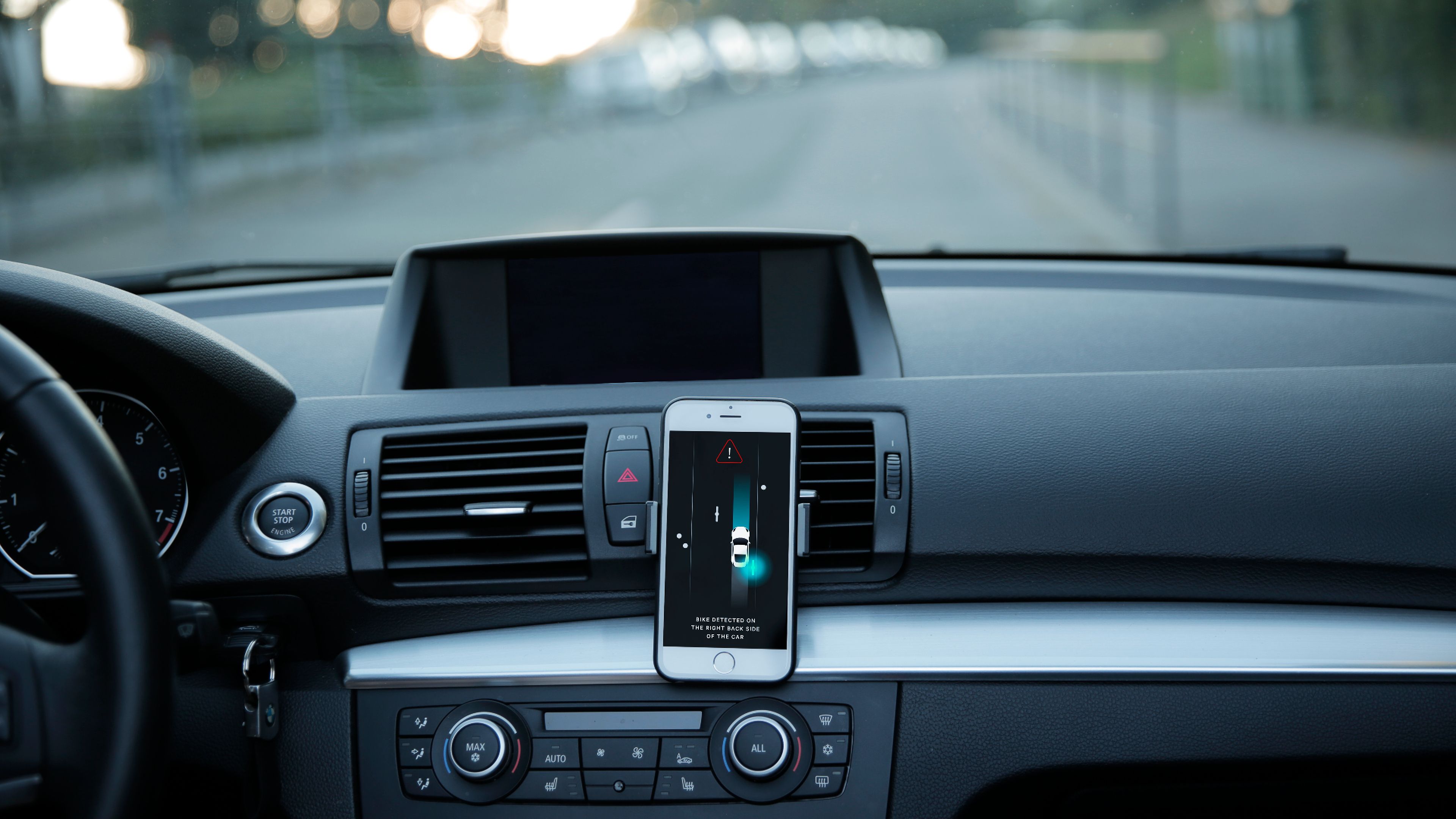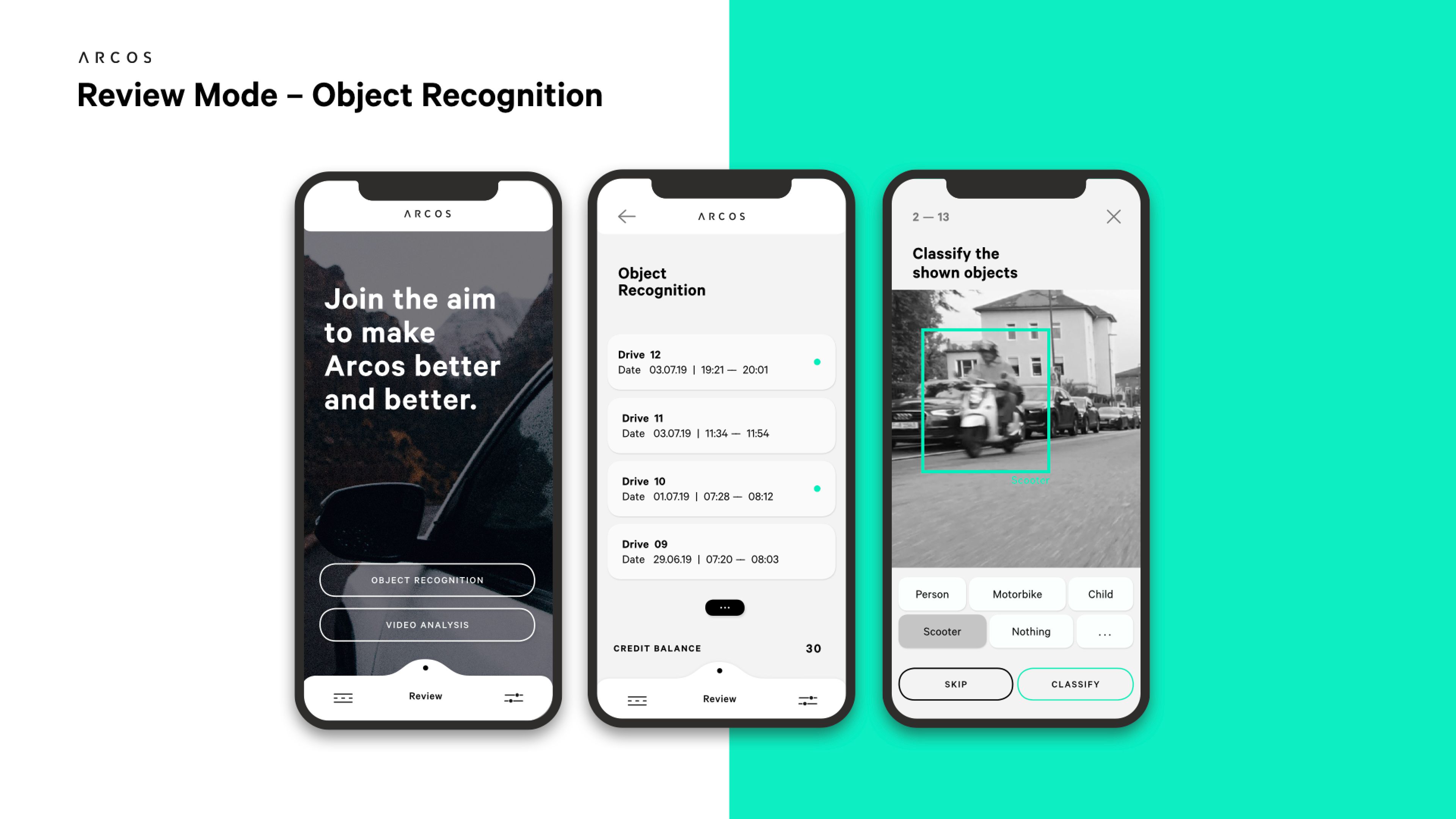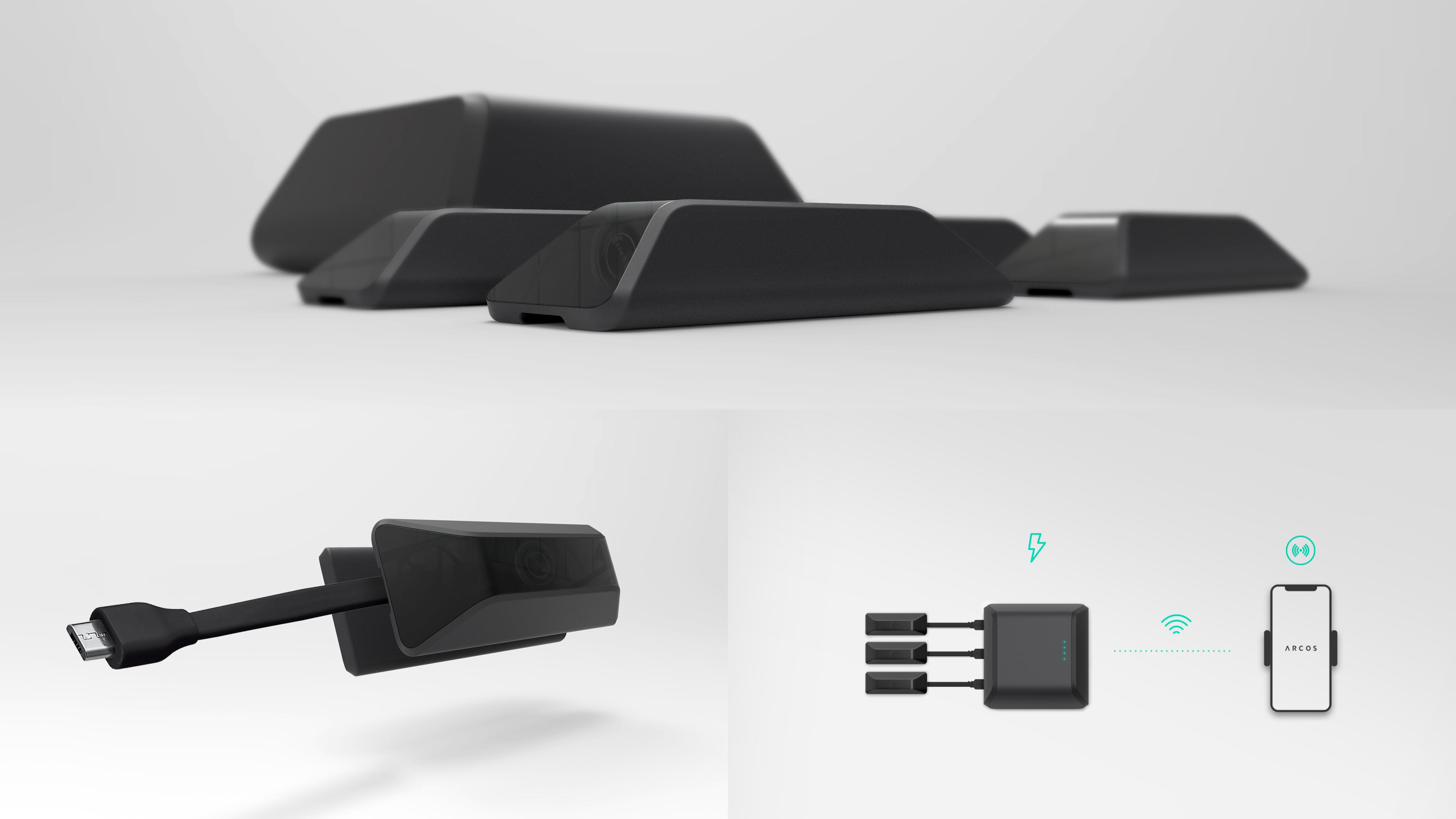
Year
2020
Category
New Talent
Country
Germany
School
Hochschule für Gestaltung Schwäbisch Gmünd
Teacher
Prof. Benedikt Groß
»Future mobility can definitely not be solved in a sustainable way by simply replacing existing cars with advanced technology vehicles. Besides, considering the amount of non-connected cars on the road, added safety assistance should be accessible to all traffic participants. This means reaching beyond those consumers privileged to afford the newest and most advanced features and tapping into solutions for existing automobiles. The jury acknowledges the complexities that this concept still needs to address to "make it real" – however, the thinking, process, narrative and outcomes reveal a great approach towards new talent solving an existing problem for our future mobility strategies.«
Layla Keramat

Three questions for the project team
What was the particular challenge of the project from a UX point of view?
In the beginning of our project, the biggest challenge was to develop a service concept that offers an affordable and safe alternative to conventional driver assistance systems. It also had to be designed so that everyone could use it, regardless of which car model they own. To make the functionality of ARCOS' Machine Learning software more comprehensive and build up user confidence, it was important for us to actively involve them in the development process of our service through gamification.
What was your personal highlight in the development process? Was there an aha!-moment, was there a low point?
A personal highlight happened when we taped one of our smartphones to the bumper of our car and drove through the city. When we checked the performance of an Object Recognition software afterwards, we were amazed by how well these systems are already operating: It not only recognized pedestrians and street signs, but even flowers on the side of the road. Using this simple test, we knew we were on the right track. The tricky part came when we had to find a solution for the power supply of the camera modules. Since the data must be transferred to the software with low latency, we decided to use permanent power supply with one cable. Because in road traffic, milliseconds can be crucial.
Where do you see yourself and the project in the next five years?
We see great potential in ARCOS and would like to continue the development of our concept together with partners. Smart driver assistance systems will play an increasingly important role in future road traffic. However, not everyone will immediately be able to afford a new car model equipped with this technology. To bridge this gap, systems like ARCOS can be a logical step. We want to continue working on improving road traffic safety for all participants and making new technologies more tangible for our society over the next five years. All the more reason for us to be excited about the top-class jury of the UX Design Awards supporting us on this path. Thank you very much.

